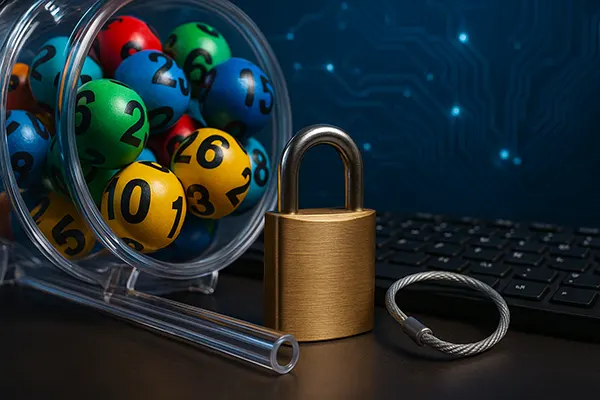Lottery operators worldwide face the critical task of ensuring fairness and transparency in every draw. As fraud attempts become more sophisticated, the industry has turned to advanced algorithms and technologies to protect players and maintain trust. In 2025, these solutions are more advanced than ever, combining cryptographic methods, artificial intelligence, and independent auditing to secure lottery systems against manipulation.
Artificial Intelligence in Fraud Detection
Artificial intelligence has become one of the strongest tools in detecting suspicious behaviour within lottery systems. Machine learning models are trained to recognise patterns that suggest irregular activity, such as unusual purchasing behaviour or repetitive ticket generation. These systems work in real time, allowing immediate alerts when anomalies are detected.
AI can also analyse large volumes of data from different sources, including transaction histories, geolocation data, and device identifiers. This helps operators quickly identify connections between fraudulent accounts or repeated attempts to exploit technical loopholes. The precision of these models reduces the risk of false positives, which is vital for maintaining customer satisfaction.
By 2025, AI is not just a support tool but an integral part of fraud prevention in lotteries. It continues to evolve with adaptive algorithms that learn from every new attempt at manipulation, strengthening their capacity to predict and prevent risks before they escalate.
Practical Applications of AI
Lottery organisations use AI for continuous monitoring of digital ticket sales and draw operations. For example, predictive models can identify the likelihood of collusion between players or detect suspiciously high win rates within specific user groups. These insights allow quick action, such as freezing accounts or initiating further investigations.
AI also contributes to the verification of draw randomness. By comparing statistical results with established mathematical models, systems can detect irregularities that may suggest external interference. This level of analysis strengthens transparency, giving regulators and players confidence in fair outcomes.
Moreover, AI enhances customer verification procedures, ensuring that each participant is genuine. Through biometric verification and behavioural analytics, AI reduces the possibility of identity fraud, making the lottery environment safer for all participants.
Blockchain and Cryptographic Verification
Blockchain technology is playing an increasingly important role in modern lotteries. Its decentralised structure provides immutable records of every draw and transaction, ensuring that results cannot be altered after the fact. Each draw can be verified independently by third parties, reinforcing public trust.
In addition to blockchain, advanced cryptographic algorithms are used to guarantee the randomness of draws. Secure random number generators (RNGs) based on cryptographic protocols prevent predictability, making it nearly impossible for fraudsters to manipulate results. These RNGs are regularly tested and certified by independent laboratories.
Lottery operators are now integrating multi-layered encryption systems, ensuring that sensitive data such as ticket numbers, user identities, and draw results are protected from cyberattacks. This creates a highly secure infrastructure where manipulation risks are significantly minimised.
Transparency Through Technology
Blockchain records are publicly accessible, allowing anyone to verify draw outcomes without relying solely on operator statements. This transparency is crucial for maintaining credibility, especially in jurisdictions where trust in institutions is low.
Some operators publish cryptographic proofs alongside draw results. These proofs can be checked by independent experts, confirming that the numbers were generated fairly and securely. This practice ensures compliance with international regulatory standards.
By combining blockchain with cryptographic verification, lotteries can provide a tamper-proof environment that is resistant to manipulation. This dual protection system reassures both regulators and players, contributing to the global credibility of lottery systems.

Independent Auditing and Regulatory Oversight
Even the most advanced algorithms require human oversight to guarantee fairness. Independent auditing firms play a key role in reviewing lottery operations, from ticket generation to draw results. These audits are conducted regularly to ensure compliance with international standards and regulations.
Regulatory authorities demand strict adherence to transparency protocols. They require lotteries to publish audit results, security certifications, and RNG testing reports. Such measures strengthen accountability and help build public trust in the integrity of the games.
By 2025, regulators also employ their own technical teams equipped with forensic analysis tools. These teams investigate any allegations of manipulation, ensuring that any weaknesses are identified and resolved swiftly to protect both operators and players.
Strengthening Trust Through Oversight
Independent audits reassure the public that no entity has undue control over draw outcomes. When external experts confirm that security systems are reliable, it creates confidence among participants. This assurance is critical for the long-term sustainability of lottery systems.
Regulatory frameworks are becoming increasingly harmonised across countries, allowing shared best practices. This global cooperation ensures that fraud prevention technologies remain consistent and effective across different jurisdictions, reducing opportunities for exploitation.
Ultimately, independent oversight closes the loop between technology and accountability. While algorithms provide precision and efficiency, human regulators ensure that ethical standards and transparency remain central to lottery operations worldwide.